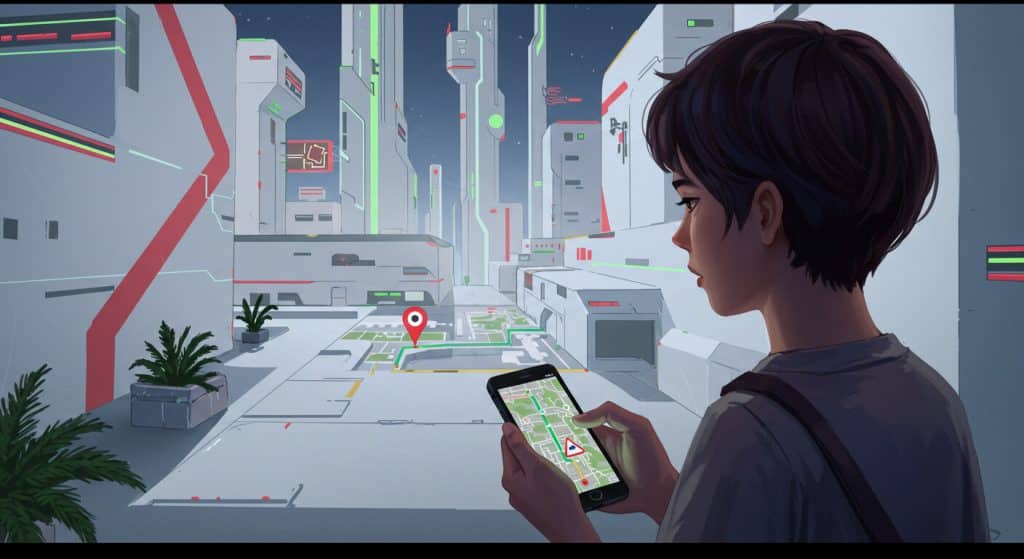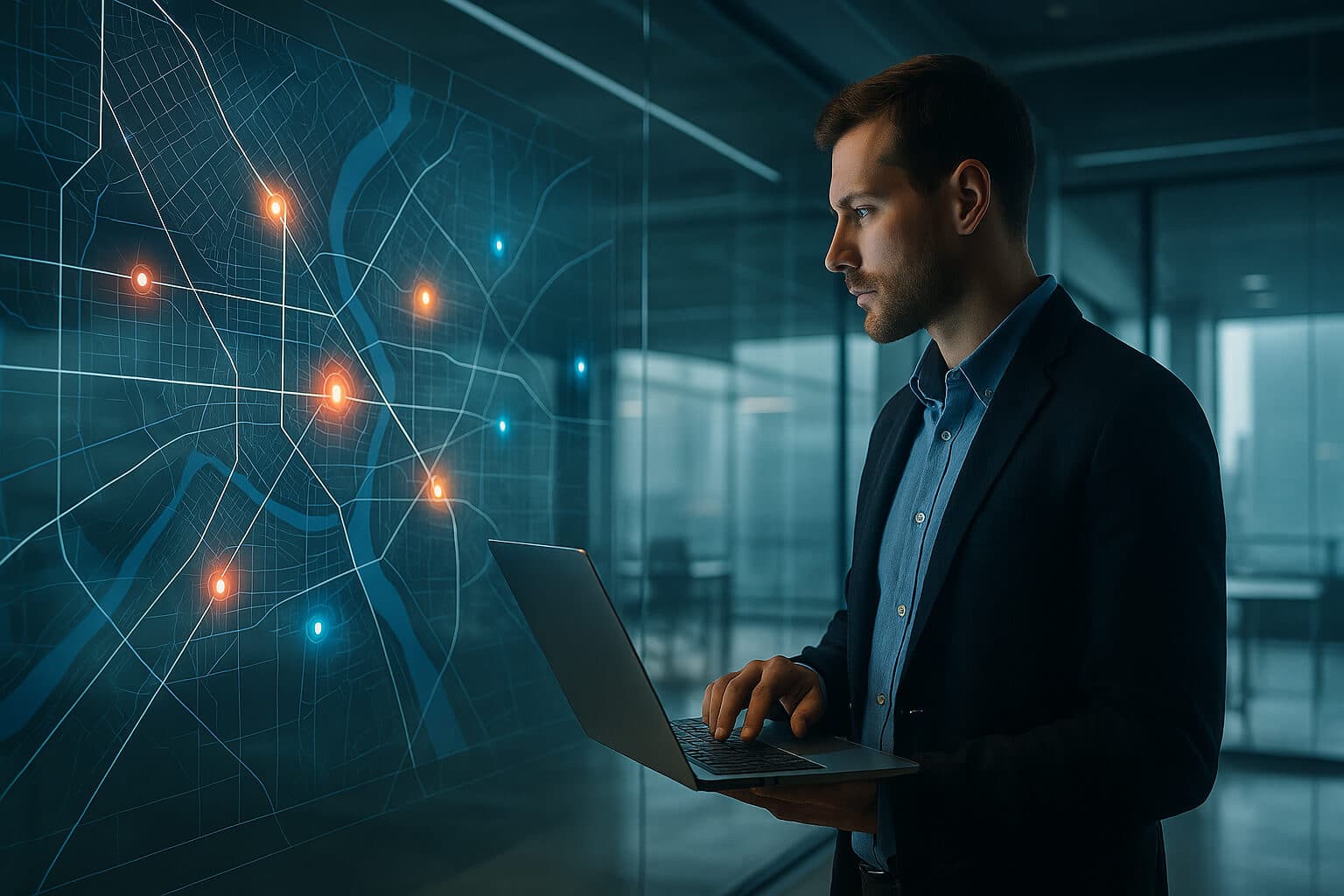
AI-Powered Navigation: The Next 10 Years of Navigation Apps
As we look toward the next ten years, the landscape of navigation apps is set to undergo significant changes driven by technological advancements and evolving user expectations. From the integration of AI and blockchain to the rise of real-time data and sustainability-focused features, the future of navigation apps is more than just getting from point A to B. It’s about creating smarter, more connected, and user-centric experiences.
Decentralization: A New Era in Data Sharing
Traditional navigation apps have long relied on centralized data systems controlled by large corporations. However, with the emergence of decentralized physical infrastructure networks (DePIN), the focus is shifting towards user-generated data. In the future, apps will leverage blockchain technology to create transparent, secure, and user-controlled data ecosystems. This shift not only democratizes data collection but also enhances accuracy and reliability, as data is verified through consensus mechanisms.
One project already making strides in this area is MapMetrics. By enabling users to contribute data through everyday movements, MapMetrics incentivizes participation and ensures that data is both real-time and community-driven. This decentralized approach could redefine how navigation apps operate, making them more resilient and less dependent on single points of failure.
Real-Time Data and Predictive Analytics
The next decade will see navigation apps integrating more comprehensive real-time data feeds. The rise of the Internet of Things (IoT) means that millions of connected devices — from vehicles to traffic lights — will provide constant streams of data. This data will power more accurate traffic predictions, incident alerts, and route optimization.
Predictive analytics will also become a cornerstone feature. Apps will learn from past data to anticipate traffic congestion, weather disruptions, and even road closures. By analyzing patterns over time, navigation systems can proactively suggest the best routes, reducing delays and improving overall efficiency.
AI-Powered Navigation: Personalization and Efficiency
Artificial intelligence is set to play a crucial role in personalizing navigation experiences. By analyzing user behavior, AI-powered navigation systems will tailor routes based on individual preferences — whether that means suggesting the fastest route, the most scenic path, or the one with the lowest environmental impact.
AI-powered navigation can also predict potential hazards based on past incidents, alerting drivers in advance and suggesting alternative routes. This kind of contextual awareness will not only improve safety but also enhance the overall user experience.
Moreover, AI-powered navigation will facilitate dynamic rerouting in response to real-time traffic conditions, accidents, or road closures. By continuously learning and adapting, these systems will ensure that users receive the most efficient and safe routes available.
The integration of AI-powered navigation into public transportation systems will also revolutionize urban mobility. By analyzing passenger flow and traffic patterns, AI can optimize bus and train schedules, reducing wait times and improving service reliability.
In the landscape of logistics and delivery services, AI-powered navigation will enhance route planning, ensuring timely deliveries and reducing fuel consumption. By considering factors such as delivery windows, traffic conditions, and vehicle capacities, AI can optimize routes for maximum efficiency.
Furthermore, AI-powered navigation will play a pivotal role in the development of autonomous vehicles. By processing vast amounts of data from sensors and cameras, AI can make real-time decisions, enabling self-driving cars to navigate complex environments safely.
As AI-powered navigation continues to evolve, we can expect more intuitive and responsive systems that not only guide us to our destinations but also enhance our overall travel experience.

Voice-Activated Navigation and Accessibility
Voice-activated navigation is expected to become a standard feature, offering hands-free convenience while driving. As AI voice recognition systems become more sophisticated, they will provide more accurate and context-sensitive guidance.
Moreover, accessibility features will be prioritized. Enhanced voice commands, tactile feedback, and visual cues will make navigation apps more inclusive, catering to users with disabilities or those unfamiliar with a specific area.
Sustainability and Environmental Awareness
With climate change becoming an ever-pressing concern, navigation apps will increasingly integrate eco-friendly route options. By calculating CO2 emissions for different routes, apps will allow users to choose greener paths, reducing their carbon footprint.
Urban planning will also benefit from sustainable navigation data. By analyzing traffic flows and congestion points, city planners can identify areas for improved public transportation and better road infrastructure. This data-centric approach will promote smarter, greener cities.
Indoor Mapping: Beyond Roads and Highways
While most navigation apps currently focus on streets and highways, the next frontier lies indoors. Airports, shopping malls, university campuses, and large event venues will be mapped with the same level of detail as outdoor routes.
Indoor mapping will leverage technologies like augmented reality (AR) and 3D visualization, allowing users to navigate complex spaces effortlessly. Imagine using your phone to find a specific store in a massive shopping complex or locating your departure gate at a crowded airport.
Blockchain for Data Integrity
Blockchain technology will play a pivotal role in ensuring the integrity of navigation data. With data being sourced from millions of users and devices, the risk of misinformation increases. ブロックチェーン provides a solution by enabling secure, immutable data records that can be verified by multiple nodes.
This decentralized data infrastructure will also allow users to maintain control over their personal information. Rather than data being owned by a single corporation, users can choose how and when to share their data, and even earn rewards for contributing valuable insights.
The Next Decade: A Connected and Data-Driven Future
The future of navigation apps is more connected, data-driven, and user-centric than ever before. With advancements in AI, blockchain, and real-time data integration, these apps will evolve into comprehensive mobility solutions, offering not just directions but also valuable insights into traffic patterns, environmental impact, and urban planning.
As decentralized systems gain traction, projects like MapMetrics demonstrate how users can actively participate in data sharing while maintaining control over their information. In the coming years, the navigation app landscape will likely be shaped by more open, collaborative networks, making the road ahead more connected, efficient, and sustainable for all.


